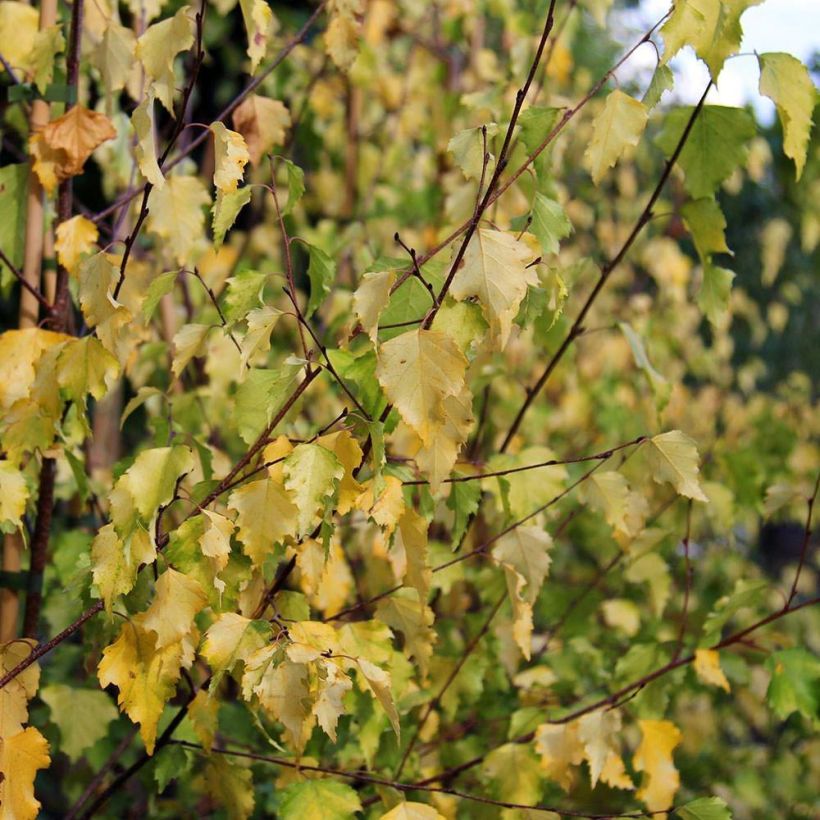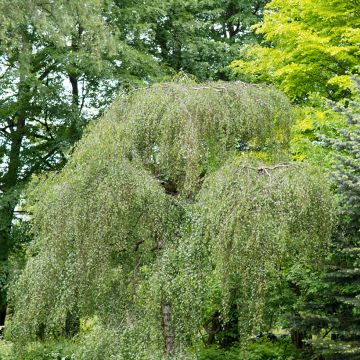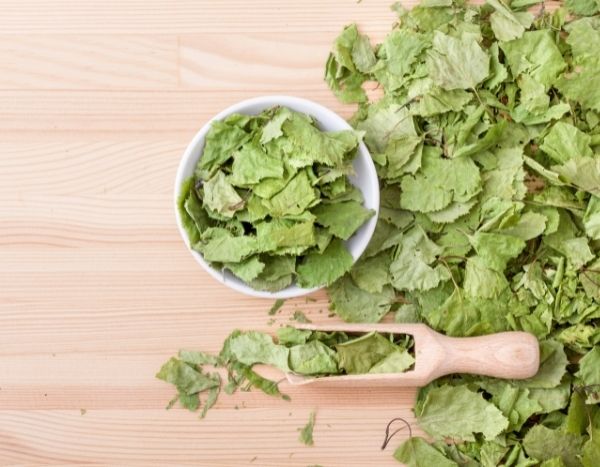

Betula pendula Golden Cloud - Birch
Betula pendula Golden Cloud - Birch
Betula pendula Golden Cloud
Silver Birch, European White Birch, Weeping Birch
Arrivé cassé, promesse de flower a très vite proposé de m'en livrer un autre. Arrivé en bon état, j'ai hâte de le voir s'épanouir. Merci pour votre service client rapide !
Angélique, 04/10/2022
Special offer!
Receive a €20 voucher for any order over €90 (excluding delivery costs, credit notes, and plastic-free options)!
1- Add your favorite plants to your cart.
2- Once you have reached €90, confirm your order (you can even choose the delivery date!).
3- As soon as your order is shipped, you will receive an email containing your voucher code, valid for 3 months (90 days).
Your voucher is unique and can only be used once, for any order with a minimum value of €20, excluding delivery costs.
Can be combined with other current offers, non-divisible and non-refundable.
Why not try an alternative variety in stock?
View all →This plant carries a 24 months recovery warranty
More information
We guarantee the quality of our plants for a full growing cycle, and will replace at our expense any plant that fails to recover under normal climatic and planting conditions.
Would this plant suit my garden?
Set up your Plantfit profile →
Description
Betula pendula 'Golden Cloud' is a variety of the very popular white birch tree, attractive with its golden and very bright foliage. It forms a small and graceful tree with its narrow cone-shaped habit and upright branches that droop slightly. It has a slow growth rate and reaches a maximum height of 6m (20ft) in 20 years, making it suitable for smaller spaces. Its small triangular leaves with serrated edges emerge yellow-golden, then turn yellow-green-golden in summer before becoming butter-yellow and falling in autumn. In winter, its young bark is cinnamon, then silvery and becoming more white with age, developing deep dark cracks. Its very light foliage prefers non-scorching exposures unlike the species, which prefers full sunlight. It is a hardy species that grows easily in well-drained and moist soils. Use it to create small groves or as a standalone tree in small to medium-sized gardens with a classic or natural style.
Originally mainly from central Europe and temperate Asia, the Betula verrucosa, sometimes called the silver birch, is a tree in the birch family. Extremely cold-resistant, it can thrive in acidic and waterlogged soils as well as sandy, clayey, and limestone soils. It has a naturally pyramidal habit, a more or less straight trunk, and an overall oval, semi-open, airy crown carried by long, almost upright branches with twigs drooping at an acute angle. In nature, some specimens reach a height of 30m (98ft). Its annual growth is about 35cm (13.8in) in height and 20cm (7.9in) in width.
The 'Golden Cloud' variety is a small variety distinguished by its golden foliage, which is more sensitive to intense sunlight. It will reach an average height of 6m (20ft) with a spread of 4m (13ft). The trunk is sometimes multiple and covered with a smooth, cinnamon-coloured bark on young specimens. Over time, it becomes silvery and then white, peeling off in flakes. On older specimens, it develops a black colouration at the base of the trunk, a rough and channelled appearance, and deep crevices. The drooping branches are reddish-brown. The deciduous foliage appears early in spring and consists of triangular leaves, 3 to 6cm (1.2 to 2.4in) long, with double-toothed edges, initially golden and then yellow-green-golden in summer. They take on a beautiful butter-yellow colour before falling. The insignificant flowering in March-April consists of greenish-yellow catkins measuring 1cm (0.4in) long. The root system of this birch is of the taproot type, producing radiating lateral main roots with a very dense network of small surface-feeding roots.
The 'Golden Cloud' white birch is a tree adapted to small semi-shaded spaces. Its white and slightly drooping branches create a striking contrast against the winter sky. In the garden, it requires no maintenance, is extremely cold-resistant, and is not prone to diseases. It deserves a prominent place, either as a standalone tree on the edge of a terrace or in the centre of a low shrub bed. To cover the base of this tree, which dries out the soil from spring to summer, it is advisable to choose plants adapted to these conditions, such as heathers and small grasses like Stipa pennata, Carex, and Ophiopogon. It can also be planted in front of a grove of trees chosen for their foliage or decorative bark, such as the Acer griseum or the Betula albosinensis. Maples, a Nysa sylvatica, a caramel tree, a Chinese mahogany, or a white willow will provide a beautiful backdrop for this lovely tree.
Betula pendula Golden Cloud - Birch in pictures


Plant habit
Flowering
Foliage
Safety measures
Botanical data
Betula
pendula
Golden Cloud
Betulaceae
Silver Birch, European White Birch, Weeping Birch
Cultivar or hybrid
atteinterespiratoire
Cette plante peut entraîner des symptômes allergiques.
Evitez de la planter si vous ou vos proches souffrez de rhinite saisonnière ("rhume des foins").
Davantage d'informations sur https://plantes-risque.info
Other Betula - Birch tree
View all →Planting and care
Easy to grow, 'Golden Cloud' White Birch requires little maintenance and can do without pruning. It should be planted in moist soil, low in limestone and slightly acidic to obtain beautiful foliage colours, but it will also thrive in neutral to slightly alkaline soil, in the sun (avoiding scorching exposures that would cause leaf burns) or in partial shade. It tolerates clayey, loamy, sandy, peaty and nutrient-poor soils that may occasionally be dry. This tree produces numerous shallow roots that can hinder the establishment of other plants under its crown, by drying and depleting the soil. It does not tolerate salt spray well.
Planting period
Intended location
Care
Planting & care advice
-
, onOrder confirmed
Reply from on Promesse de fleurs
Haven't found what you were looking for?
Hardiness is the lowest winter temperature a plant can endure without suffering serious damage or even dying. However, hardiness is affected by location (a sheltered area, such as a patio), protection (winter cover) and soil type (hardiness is improved by well-drained soil).

Photo Sharing Terms & Conditions
In order to encourage gardeners to interact and share their experiences, Promesse de fleurs offers various media enabling content to be uploaded onto its Site - in particular via the ‘Photo sharing’ module.
The User agrees to refrain from:
- Posting any content that is illegal, prejudicial, insulting, racist, inciteful to hatred, revisionist, contrary to public decency, that infringes on privacy or on the privacy rights of third parties, in particular the publicity rights of persons and goods, intellectual property rights, or the right to privacy.
- Submitting content on behalf of a third party;
- Impersonate the identity of a third party and/or publish any personal information about a third party;
In general, the User undertakes to refrain from any unethical behaviour.
All Content (in particular text, comments, files, images, photos, videos, creative works, etc.), which may be subject to property or intellectual property rights, image or other private rights, shall remain the property of the User, subject to the limited rights granted by the terms of the licence granted by Promesse de fleurs as stated below. Users are at liberty to publish or not to publish such Content on the Site, notably via the ‘Photo Sharing’ facility, and accept that this Content shall be made public and freely accessible, notably on the Internet.
Users further acknowledge, undertake to have ,and guarantee that they hold all necessary rights and permissions to publish such material on the Site, in particular with regard to the legislation in force pertaining to any privacy, property, intellectual property, image, or contractual rights, or rights of any other nature. By publishing such Content on the Site, Users acknowledge accepting full liability as publishers of the Content within the meaning of the law, and grant Promesse de fleurs, free of charge, an inclusive, worldwide licence for the said Content for the entire duration of its publication, including all reproduction, representation, up/downloading, displaying, performing, transmission, and storage rights.
Users also grant permission for their name to be linked to the Content and accept that this link may not always be made available.
By engaging in posting material, Users consent to their Content becoming automatically accessible on the Internet, in particular on other sites and/or blogs and/or web pages of the Promesse de fleurs site, including in particular social pages and the Promesse de fleurs catalogue.
Users may secure the removal of entrusted content free of charge by issuing a simple request via our contact form.
The flowering period indicated on our website applies to countries and regions located in USDA zone 8 (France, the United Kingdom, Ireland, the Netherlands, etc.)
It will vary according to where you live:
- In zones 9 to 10 (Italy, Spain, Greece, etc.), flowering will occur about 2 to 4 weeks earlier.
- In zones 6 to 7 (Germany, Poland, Slovenia, and lower mountainous regions), flowering will be delayed by 2 to 3 weeks.
- In zone 5 (Central Europe, Scandinavia), blooming will be delayed by 3 to 5 weeks.
In temperate climates, pruning of spring-flowering shrubs (forsythia, spireas, etc.) should be done just after flowering.
Pruning of summer-flowering shrubs (Indian Lilac, Perovskia, etc.) can be done in winter or spring.
In cold regions as well as with frost-sensitive plants, avoid pruning too early when severe frosts may still occur.
The planting period indicated on our website applies to countries and regions located in USDA zone 8 (France, United Kingdom, Ireland, Netherlands).
It will vary according to where you live:
- In Mediterranean zones (Marseille, Madrid, Milan, etc.), autumn and winter are the best planting periods.
- In continental zones (Strasbourg, Munich, Vienna, etc.), delay planting by 2 to 3 weeks in spring and bring it forward by 2 to 4 weeks in autumn.
- In mountainous regions (the Alps, Pyrenees, Carpathians, etc.), it is best to plant in late spring (May-June) or late summer (August-September).
The harvesting period indicated on our website applies to countries and regions in USDA zone 8 (France, England, Ireland, the Netherlands).
In colder areas (Scandinavia, Poland, Austria...) fruit and vegetable harvests are likely to be delayed by 3-4 weeks.
In warmer areas (Italy, Spain, Greece, etc.), harvesting will probably take place earlier, depending on weather conditions.
The sowing periods indicated on our website apply to countries and regions within USDA Zone 8 (France, UK, Ireland, Netherlands).
In colder areas (Scandinavia, Poland, Austria...), delay any outdoor sowing by 3-4 weeks, or sow under glass.
In warmer climes (Italy, Spain, Greece, etc.), bring outdoor sowing forward by a few weeks.






















































